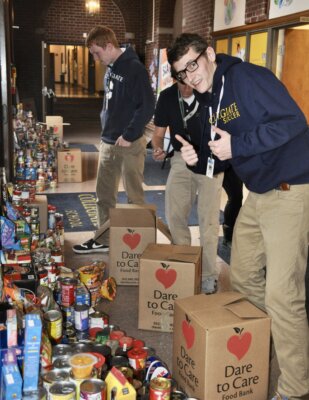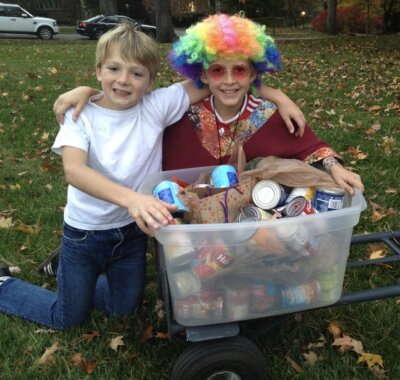Help Scare Away Hunger In your Community
Imagine you’re a student trying to do your homework, but you didn’t have any dinner, so you’re too hungry to concentrate. Then you go to bed hungry so you don’t sleep well. You go to school knowing that you’ll get food there, but it won’t be enough to fuel your growing body and brain until the following morning. And on the weekend you can’t even have a school meal. Or imagine you’re a parent, and you’re skipping meals so that you can feed your children because there isn’t enough for all of you. This is much more common than most of us realize.
Here are some facts about hunger in the United States, from Feeding America.
–Households with children are more likely to experience food insecurity. Before the coronavirus pandemic, more than 12 million children live in food-insecure households. Due to the pandemic that number is now closer to 13 million.
–Every community in the country is home to families who face hunger, including rural and suburban communities.
–Many households that experience food insecurity do not qualify for federal nutrition programs and visit their local food banks and other food programs for extra support.
–Hunger in African American, Latino, and Native American communities is higher because of systemic racial injustice. To achieve a hunger-free America, we must address the root causes of hunger and structural and systemic inequities.
We can all do something to help fight food insecurity in our communities! WE Scare Hunger focuses on what young people can do at any age, including Trick or Treating for cans, not just candy! Where COVID protocols permit, try these other age-appropriate ideas!
Grades 4-6: Research online to learn more about hunger and how it affects your local community. Create visual posters to post around your school to share all the interesting facts you’ve learned! Then, host a Food Drive Lottery at your school, where every food item donated will earn your class one ballot in the lottery! Work together with your teacher to come up with a great prize (maybe a pajama party, movie day, pizza lunch, etc.) and get everybody in on the foodie fun!
Grades 7-8: Research online and contact local food banks to learn what they are most in need of, such as personal hygiene products and baby products. Put together some care packages to be dropped off at a local food bank or shelter! Look into different food-sharing initiatives in your community and learn how you or your class can become involved. A great place to start is Olio — an incredible startup that connects community members and local businesses so that extra food can be shared instead of thrown away! https://olioex.com 
Grades 9-12: Volunteer with your class or school group at a food bank. Help sort, pack and store donations, and learn about the important role food banks play in your community.
Start a biweekly after-school Sandwich Patrol, where students can come together after the bell to work together making delicious brown bag sandwich lunches and head downtown with a teacher to personally deliver them to individuals you see struggling in your community. In the colder months maybe pack along some warm winter accessories to pair with the sandwiches!
To learn more about hunger, here are some additional resources:
Go to the Dare To Care website to learn about food insecurity in your county. https://daretocare.org/county/jefferson-county/
To read more about food insecurity in Kentucky, and to learn where the closest food bank is, either to donate or to seek support, go to the Feeding America website.
https://www.feedingamerica.org/hunger-in-america/kentucky
